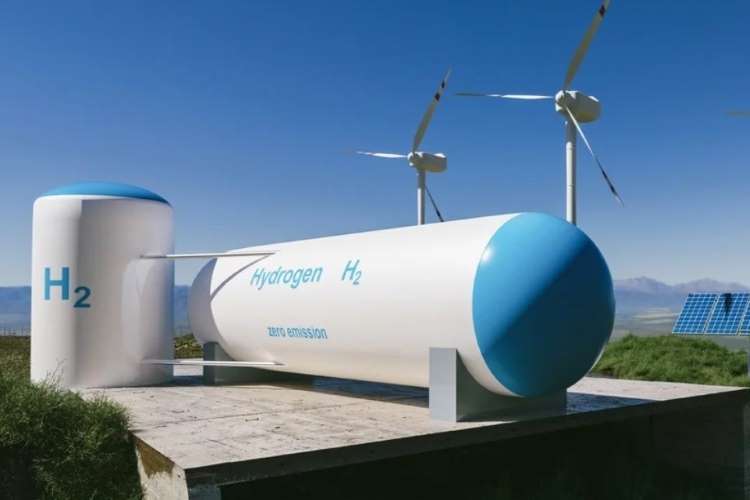
In Vedic Astrology, Amrit Kaal is known to be an auspicious period that ushers in growth and prosperity for all. The Union budget 2023 lays down the first step to achieve this, and it is a testament that India is truly committed to ingraining inclusivity and development for everyone, all the while forging on the path to becoming a digital first nation. In addition, sustainability is clearly front and centre throughout the budget. With Rs 35,000 crore being allocated towards capital investment initiatives to achieve net zero by 2070, India is proving that it is putting its money where its mouth is, and blazing down a sustainable path. However, that’s not all in India’s quest to go green.
A key initiative to help India in its low carbon transition is the National Hydrogen Mission. With an investment of Rs 19,700 crore, not only will this help our annual production reach 5MMT by 2030, it will also reduce carbon emissions by a whopping one billion tonnes by 2030. This will make India one of the leaders in this sunrise sector. In addition, the budget includes initiatives such as scrapping of old polluting vehicles and exemptions to help competitive manufacturing of lithium-ion cells for EV batteries.
READ I Rural sector: Budget 2023 shows intention, but falls short on allocation
The Indian Railways got the highest ever capital outlay of Rs 2.4 lakh crore for infrastructure development. Overall, this is great news for the transport sector which accounts for roughly 15-20% of all man-made emissions.
The budget also encourages sustainable development of cities, leading to better resource management, urban sanitation, efficiency, opportunities as well as development which takes into account the vulnerabilities posed by climate change. The conservation and sustainable utilisation of mangroves and wetlands will ensure better biodiversity, natural protection, and increased livelihood for communities.
The country is focusing extensively on the circular economy by promoting the ‘Waste to Wealth’ concept. As a part of its GOBARdhan scheme (Galvanizing Organic Bio-Agro Resources Dhan), over 500 such plants are being conceptualised with a major focus on biogas. Around Rs 10,000 crore has been allocated for the development of 200 compressed biogas plants, and the budget proposes to exempt excise duty on GST-paid on natural gas which contains compressed biogas.
Budget 2023 eyes inclusive growth
The Union budget 2023 outlines a way to empower all sections of society, particularly the vulnerable and marginalised. During Covid-19, the country was able to reach out to more than 80 crore people and ensure their food security for more than two years. The PM Garib Kalyan Anna Yojana will continue to spearhead food security for priority households. Going off the success of the aspirational districts programme, an aspirational blocks programme will be kickstarted for targeted development at a block-level. For particularly vulnerable tribal groups, Rs 15,000 crore will be utilised to better their habitation and livelihoods, in addition to the creation of 740 model residential schools.
Skilling and development are another key highlight. For this, a nation-wide apprenticeship promotion scheme will be launched, and further development of the Skill India Digital Platform will be done. India’s self-help groups will be provided with access to better materials and support to scale their enterprises. And for the first time, traditional artisans and craftspeople will be able to get financial support, access to advanced skill training and sustainable technologies, promotions, market linkage, and help with social security.
The farmer is certainly not left behind in this year’s budget. A plan has been proposed to help one crore farmers adopt natural farming practices by promoting 10,000 bio input resource centres. A new agriculture accelerator, and an increase in credit target to Rs 20 crore are just a few initiatives to enable greater innovation in the sector, leading to additional livelihood for farmers. Additionally, India is pushing to become a global hub for millets, which perfectly syncs with the United Nations declaring 2023 as the Year of Millets. The push on promoting cooperatives and setting up of decentralised storage will be a boon for farmers and fishermen alike.
Illness to wellness
There is a big push to move the country from sick care to health care. This is being done by promoting the establishment of nursing colleges, promoting R&D in pharma and healthcare and increasing access to courses on futuristic technologies. Lastly, a mission to eliminate sickle cell anaemia in tribal areas has also been introduced.
A digi-first nation
in 2015 PM Modi’s Digital India initiative that helped transform India into a digitally empowered economy. India has been making giant strides on turning into a digital first country, and the horizontal ‘India Stack’ is a testament to this. This has produced nationally adopted initiatives such as UPI, Aadhar, Cowin, Digilocker. The fact that you can buy your vegetables and Paytm the vendor the payment is an example of how widespread this adoption is.
The budget now introduces Vertical Stacks for sectors which are still largely dominated by vertical, fragmented silos, primarily the education sector and healthcare sector. Digital Libraries are purported to be set up nationwide for children and adolescents, with financial literacy being promoted as well. This will ensure that the children of today are provided with adequate access to knowledge to further their development, and to make up for the loss of learning due to the pandemic. Three centres of excellence for AI are being developed to ‘Make AI in India and make AI work for India’.
Trust-led governance
From a governance perspective, the budget focuses on transparency, digitization and ease of doing business. More than 39,000 compliances have been reduced, and 3,400 legal provisions have been decriminalised. The Jan Vishwas Bill is a way of fostering trust led governance. Digitization efforts such as the Common Business Identifier, Unified Filing Process and the continuation of the ‘e-Courts’ process will facilitate better business and better dispute resolution for all.
These are just some of the highlights from the budget. To ensure the concrete implementation of these initiatives, not only is India providing ‘grants-in-aid’ to the tune of Rs.13.7 lakh crore to State Governments, interest free loans and infrastructure development funds are being promoted too.
All-in-all, the budget ties together energy, mobility, people, communities and traditional Indian ideas to propose a truly holistic, ESG-focused vision of development of India.
Shailesh Haribhakti is a Chartered and Cost Accountant, an internal auditor and a certified financial planner. He is a board chairman, audit committee chair and independent director at some of the country's most preeminent organisations. He is a thought leader on the Indian economy and public policy.

